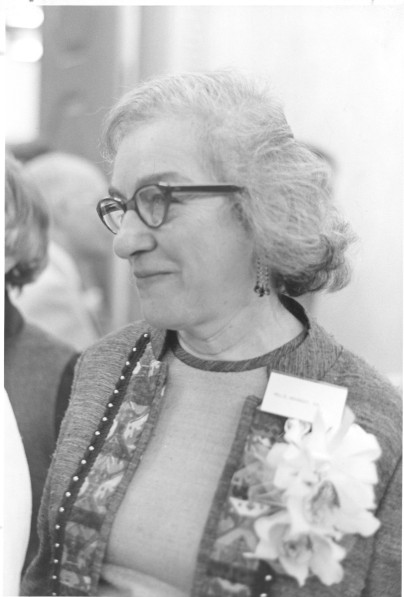Mollie Orshansky

Mollie Orshansky in 1967. SSA History Archives.
Miss Mollie Orshansky attended Hunter College from 1931 to 1935. She attained an A.B. degree, with major study in mathematics and statistics. After she started working as a federal employee in Washington, she took graduate courses in economics and statistics at the Department of Agriculture Graduate School and American University.
After graduating from Hunter College, she worked for a year as a statistical clerk in the New York Department of Health’s Bureau of Nursing, doing work on infant mortality and other subjects. Her Federal career began in 1936 as a Research Clerk with the U.S. Children’s Bureau, working on biometric studies of child health, growth, and nutrition. From 1942 to 1943, as a Statistician in the New York City Department of Health, she worked on a survey of the incidence of and therapies for pneumonia. From 1943 to 1945, she worked for the U.S. National War Labor Board as the Chief of the Program Statistics Division. In 1945, Miss Orshansky moved to the U.S. Department of Agriculture, where she spent the next six years as a Family Economist, conducting research on family consumption and levels of living. From 1951 to 1953, she worked for the U.S. Wage Stabilization Board as the Director of the Program Statistics Division, planning and directing the Board’s statistical program. From 1953 to 1958, she returned to the Agriculture Department as a Food Economist responsible for the collecting and analyzing data on food consumption and expenditures by households in the United States.
In 1958, Miss Orshansky joined the Social Security Administration then part of the U.S. Department of Health, Education, and Welfare as a Social Science Research Analyst in the Office of Research and Statistics where she became responsible for analytical studies to measure income adequacy, family welfare and patterns of family income. In 1963 and 1964 she developed the poverty thresholds that later became the official measure of poverty used by the U.S. government. The basis of her idea was to use the cost of a nutritionally adequate diet as the basis for a cost‑of‑living estimate and to calculate a cost of living for families of different sizes and composition. In 1976 Miss Orshansky received the Distinguished Service Award from the Department of Health, Education, and Welfare in recognition for her leadership in creating the first nationally accepted measures of income adequacy and applying them to public policy.
The contributions made by Miss Orshansky to the statistical measurement of the low income population, and its causal effects of Federal programs on that population have earned her the affectionate moniker, “Miss Poverty.”
Mollie Orshansky retired from the Social Security Administration in 1982, after more than 40 years of government service.
Additional Information:
DHHS/ASPE WEBSITE ON MOLLIE ORSHANSKY